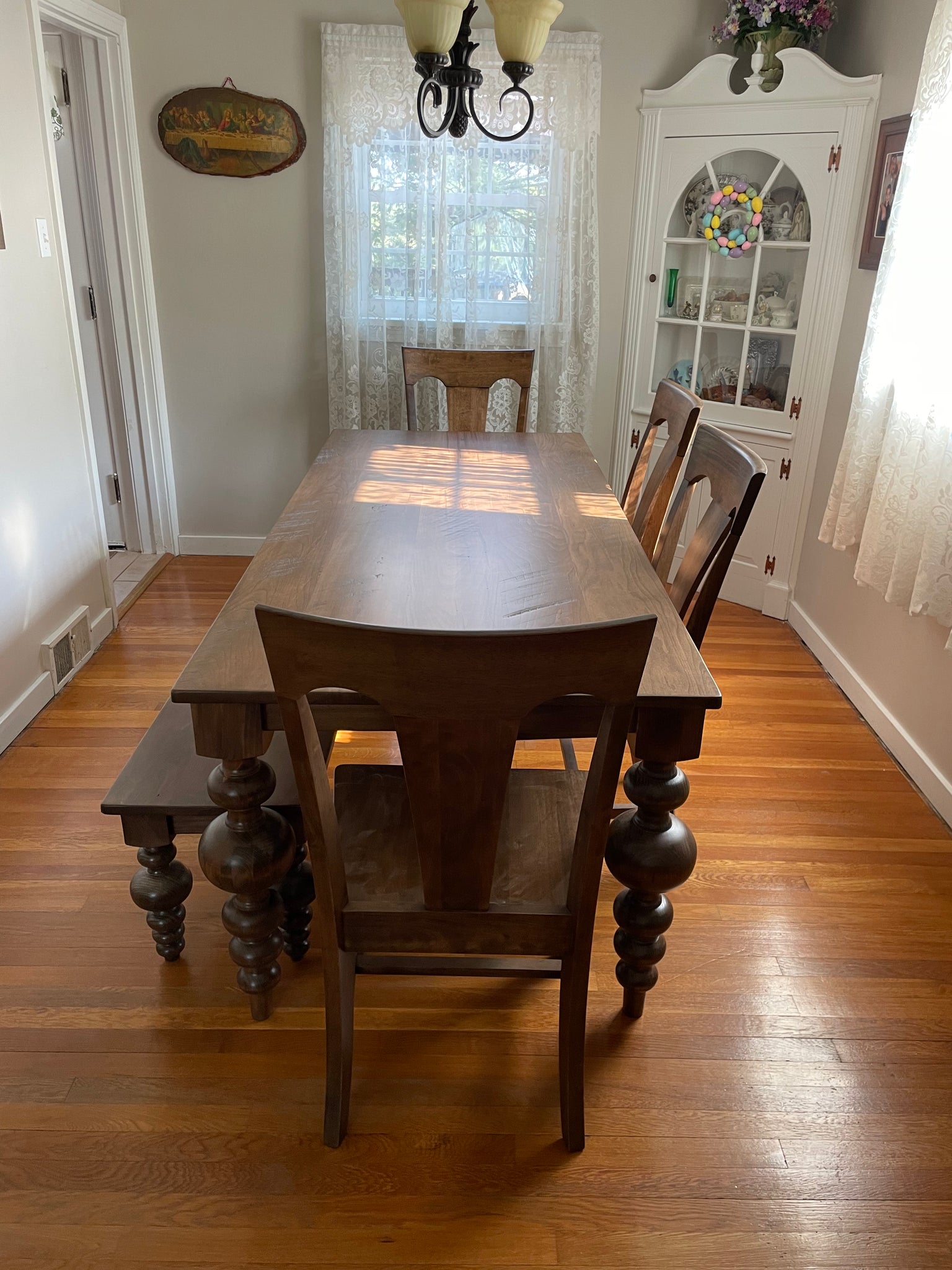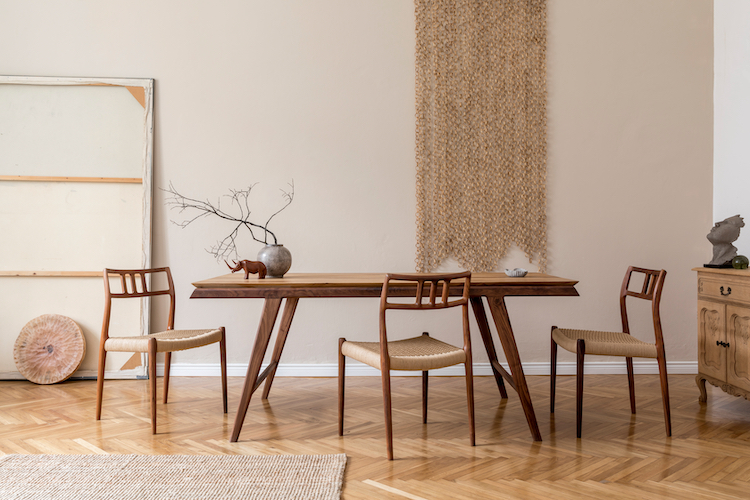Why Custom Dining Room Table Legs Are Worth the Investment
Why Custom Dining Room Table Legs Are Worth the Investment
Blog Article
From Standard to Modern: Locate the Ideal Dining Area Table Legs for Your Style
While classic designs such as cabriole and turned legs evoke a sense of timeless sophistication, contemporary styles like barrette and geometric alternatives offer a chance for striking aesthetic rate of interest. As you consider these elements, the concern stays: exactly how can you effortlessly integrate these diverse leg designs to create a harmonious dining experience?
Understanding Table Leg Styles
The range of dining-room table leg styles can dramatically affect both the appearances and functionality of the room. Each leg design adds special visual components and functional functions, accommodating varied style preferences and use demands. Comprehending these styles is crucial for picking the ideal table that aligns with your total interior decoration vision.
As an example, tapered legs offer a tidy, traditional appearance that can improve a room's style, while stand bases offer security and maximize legroom, making them excellent for smaller areas. Hairpin legs, a hallmark of mid-century contemporary design, present an industrial panache, enabling a ventilated, open feel. Similarly, trestle legs stimulate rustic charm, supplying robust assistance and a feeling of timelessness.
Wooden legs can bring heat and appearance, whereas metal choices often convey a smooth, modern ambiance. Ultimately, comprehending table leg designs is essential for creating a cohesive eating location that mirrors individual design while ensuring practicality and comfort.
Conventional Table Leg Options
When selecting dining space table legs, standard alternatives usually embody timeless beauty and workmanship. These styles show an abundant heritage and a dedication to top quality, making them ideal for those who appreciate classic looks.
Among one of the most legendary typical leg designs is the cabriole leg, identified by its elegant bent form. This layout commonly features decorative carvings and is most typically found in Queen Anne and Chippendale furniture. Another popular option is the transformed leg, which flaunts a collection of smooth, rounded shapes that offer a classic appearance while maintaining security.
Moreover, the straight leg, while easy, uses a tough and unadorned framework that can blend seamlessly with a selection of tabletop styles. For those drawn to ornate describing, claw-and-ball feet legs stimulate a feeling of splendour and can work as a stunning focal point in any kind of eating area.
Lastly, stand bases, although not purely legs, give an alternate conventional option that permits enough legroom and can be perfectly sculpted. Each of these conventional leg designs adds to the overall ambiance of an eating space, marrying feature with aesthetic allure.

Modern Table Leg Layouts
Modern table leg layouts use a diverse variety of styles that stress tidy lines and cutting-edge products. These designs frequently focus on capability while acting as striking centerpieces within a dining space. Minimal appearances prevail, with legs crafted from products such as metal, glass, and engineered timber, which add to a ventilated and contemporary feeling.
One popular style is the barrette leg, characterized by its slim, tapered framework that offers security without overwhelming the tabletop (dining room table legs). This design is commonly discovered in mid-century modern furniture and can easily complement numerous eating table shapes. An additional fad is the usage of geometric shapes, where legs might take on angular or unbalanced forms, including visual interest and a touch of artistry

Blending Designs for Unique Spaces
Often, home owners look for to create one-of-a-kind dining spaces that mirror their personal design by blending various style elements. This strategy permits the incorporation of varied Read Full Report looks, resulting in an unified yet unique setting. Pairing a rustic wooden table with streamlined, contemporary steel legs can produce a distinctive contrast that boosts the room's general allure.
Furthermore, incorporating vintage table legs with contemporary table tops can stimulate a sense of background while keeping a contemporary perceptiveness. Such mixes not just display private preference however additionally encourage imagination, permitting property owners to curate a room that feels both personal and welcoming.
Color plays an essential duty in this mixing process; selecting table legs that enhance or contrast with the existing color design can improve visual passion. As an example, whitewashed legs can soften the daring of a dark table surface, producing a well balanced visual.
Tips for Selecting the Right Legs
Choosing the right table legs is crucial for achieving both performance and aesthetic charm in your dining check this area. Begin by taking into consideration the general style of your room. Traditional setups gain from legs that include intricate carvings website here or turned styles, while contemporary spaces may require sleek, minimal designs.
Next, analyze the height and stability of the legs. dining room table legs. Common dining tables vary in between 28 to 30 inches in elevation, so ensure the legs match this dimension for comfort. Furthermore, robust materials, such as wood or metal, can enhance security and long life
Evaluate the leg shape as well-- options include straight, tapered, or pedestal layouts. Straight legs supply a timeless appearance, while conical legs can add a touch of beauty. Pedestal bases offer sufficient legroom and are optimal for smaller spaces.
Conclusion
In summary, picking the ideal dining-room table legs needs mindful factor to consider of both modern and conventional styles. Conventional choices such as cabriole and transformed legs use ageless elegance, while modern styles like barrette and geometric shapes provide a contemporary touch. By harmonizing leg style, height, and material with the total decor, a cohesive and welcoming atmosphere can be achieved. Ultimately, the chosen table legs need to show the preferred visual, improving the dining experience within the room.
The range of eating space table leg designs can substantially influence both the aesthetics and performance of the space. Eventually, understanding table leg designs is essential for developing a cohesive eating location that shows individual style while making sure practicality and comfort.One of the most legendary typical leg designs is the cabriole leg, defined by its graceful bent shape. Straight legs provide a classic appearance, while conical legs can add a touch of style.In recap, selecting the excellent dining space table legs calls for careful consideration of both contemporary and standard designs.
Report this page